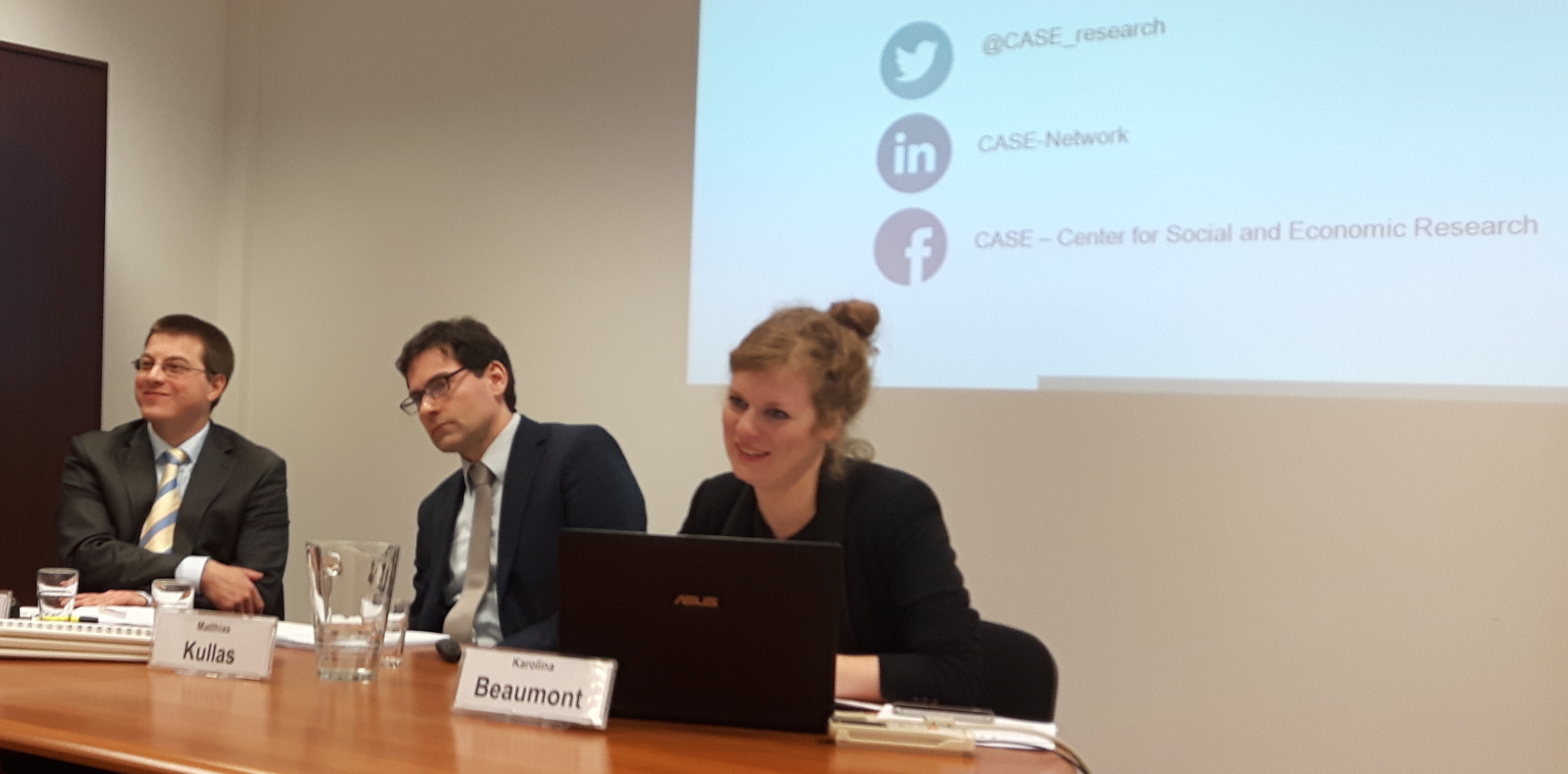CASE: Female Brain Drain in Poland and Germany
Matthias Kullas und Matthias Dauner beim Center for Social and Economic Research in Warschau
The Polish migration is estimated at nearly 20 million people around the world, more than half of the Polish population. Among those migrants, many are highly educated people looking for working opportunities abroad, which generates brain drain. While this issue has had significant impacts for Poland for decades, as it presents many issues and challenges, the gender perspective of the problem is a relatively new topic that remains under-researched.
International experts: Karolina Beaumont from CASE – Center for Social and Economic Research, Matthias Kullas and Matthias Dauner from the Centre for European Policy discussed the issues of migration of skilled professionals in between Poland and Germany during the seminar which took place at the CASE headquarters in Warsaw on the 15th of December.
As a starting point they explained basic terms used in their research, namely: (1) brain drain, (2) brain gain and (3) brain waste, where (1) stands for migration of highly-skilled and highly-educated from home country abroad, (2): migration of highly-skilled and highly-educated from abroad to the receiving country, finally (3) covers migrants who work a job bellow their skill-level in the receiving country.
As the experts pointed out, the first difficulty that researches of this topic meet, is a lack of, or discrepancies in data, especially in terms of gender specification of migrants.
However, what is clearly evident is that the number of Poles migrating to Germany is higher than Germans migrating to Poland; and this number constantly grows. This is mostly due to economic (higher wages in Germany, better child care) and political reasons (accession of Poland to the EU and the opening of the German labor market to Polish workers). An additional phenomenon in the past years is a growth of highly skilled workers in Poland that migrate to Germany and create a brain drain. This is particularly visible among women. For instance, there were more highly educated female migrants compared to male ones after Poland’s accession to the EU (27 per cent for women as opposed to 15.6 per cent for men). At that same time, the overall number of male migrants to Germany remains higher than the number of migrant women.
The discussion revealed the complexity of the migration topic, especially in the gender context. Professor Siemieńska, Head of the Centre of Interdisciplinary Gender Studies of the Institute for Social Studies at the Warsaw University and the guest of the seminar noted that “high education” of workers is a relative matter, since many Polish workers obtain low-quality diplomas which does not necessarily lead to a “brain waste”. Another participant pointed out that there is a strong need of conducting a research comparing male and female migration, taking into consideration age distribution of both groups. An interesting issue that appeared during the discussion was related to students’ migration – it happens when a country invests in a foreign student, who, after finishing his studies goes back to his home country thus generating a brain drain in the host country.
The event was organised in frames of the project "Brain drain/brain gain: Polish-German challenges and perspectives - Focus on the gender aspects of labour migration from 1989" with financial support from the Polish-German Foundation for Science and The Foundation for Polish-German Cooperation
http://www.case-research.eu/en/female-brain-drain-in-poland-and-germany-2



